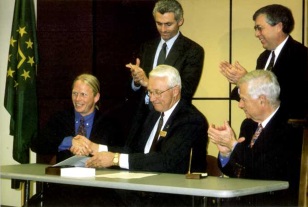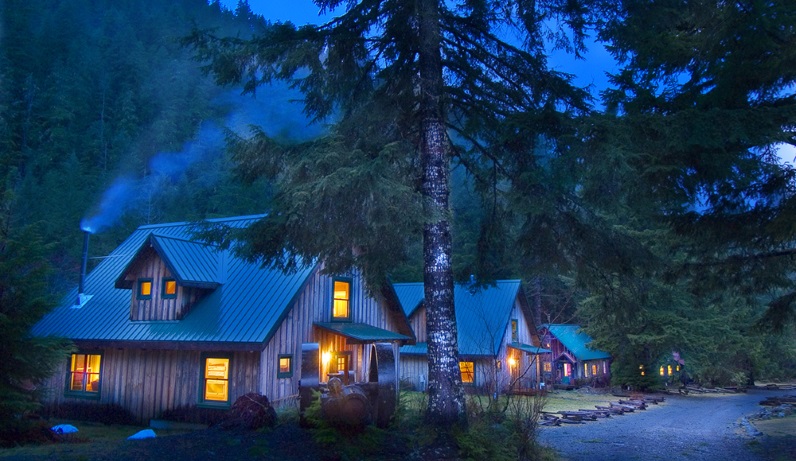Friends of Opal Creek
The Opal Creek Ancient Forest Center was originally incorporated in 1988 and was known then as the “Friends of Opal Creek”. In the 1970s and 1980s, plans to log old-growth stands in the Opal Creek watershed stirred up local activists who knew the Opal Creek landscape was one of the last big strongholds of a very special kind of ecosystem: low-elevation old growth forest of the western Cascade Range. Friends of Opal Creek advocated to secure permanent protection of the forested watershed by increasing public awareness of the natural and cultural resources, scenic beauty, plant and animal diversity, and ecological complexity of this extraordinary area. In 1992 the Shiny Rock Mining Company gave Friends of Opal Creek a land gift of 151 acres in the Opal Creek watershed valued at $12.6 million, including the entire historic mining town of Jawbone Flats and stands of old-growth forest.
Local, statewide and national efforts culminated in October 1996 with the establishment, through federal legislation, of the 20,827-acre Opal Creek Wilderness, the 13,538-acre Opal Creek Scenic Recreation Area and a 3,066-acre Wild and Scenic River designation for Elkhorn Creek. Except for the 15-acre inholding of Jawbone Flats, the Opal Creek Act required all privately-owned lands be returned to public ownership; the Friends of Opal Creek donated the other 136 acres of private lands back to the Willamette National Forest. Friends of Opal Creek continued to operate the historic mining town of Jawbone Flats, transforming the cabins, commissary and lodge into a center for forest ecology and education in alignment with our mission.
Opal Creek Ancient Forest Center
 In 2005, Friends of Opal Creek changed our name to the Opal Creek Ancient Forest Center. Our center has educated thousands of students in outdoor school programs, hosted science conferences, art and writing retreats, and wilderness medicine certification courses. We have used the Jawbone Flats site as a launch point for our popular Opal Creek Expeditions program, where we guide youth on week-long backpacking trips. Opal Creek Ancient Forest Center also provided a small but popular cabin rental program at Jawbone Flats. The successful conservation of the Opal Creek forest received international attention, and opportunities for hiking, swimming, and camping were enjoyed by more than 20,000 visitors each year.
In 2005, Friends of Opal Creek changed our name to the Opal Creek Ancient Forest Center. Our center has educated thousands of students in outdoor school programs, hosted science conferences, art and writing retreats, and wilderness medicine certification courses. We have used the Jawbone Flats site as a launch point for our popular Opal Creek Expeditions program, where we guide youth on week-long backpacking trips. Opal Creek Ancient Forest Center also provided a small but popular cabin rental program at Jawbone Flats. The successful conservation of the Opal Creek forest received international attention, and opportunities for hiking, swimming, and camping were enjoyed by more than 20,000 visitors each year.
In September 2020, the Beachie Creek Fire swept down the Opal Creek watershed and burned much of the old growth forest in both the Wilderness Area and the Scenic Recreation Area. Almost all the historic cabins and buildings of Jawbone Flats were destroyed on our 15-acre Ancient Forest Center. Cabin 4, rebuilt in 2000, our new outdoor classroom, and our water treatment plant are the only three buildings that stand today.
Our current post-fire strategy for Jawbone Flats is focused tightly on recovery and cleanup. We are designing a new site plan that is in harmony with the land and will support the amazing education programs we continue to offer. We know from forest history and research that parts of the Opal Creek landscape have survived previous forest fires, estimated to have occurred around 1550 and 1835. Forest fires in old-growth forests are rarely totally devastating. At Opal Creek, many of the big trees in cool, wet places along valley bottoms survived, as did many around Jawbone Flats. We are resiliently excited to envision our future infrastructure and use the 2020 fire as a natural teaching lesson in our new center.



